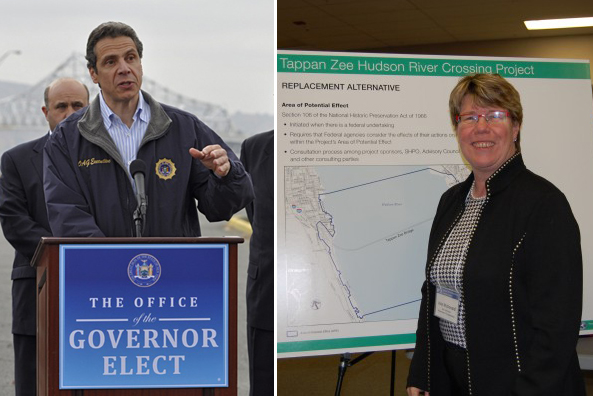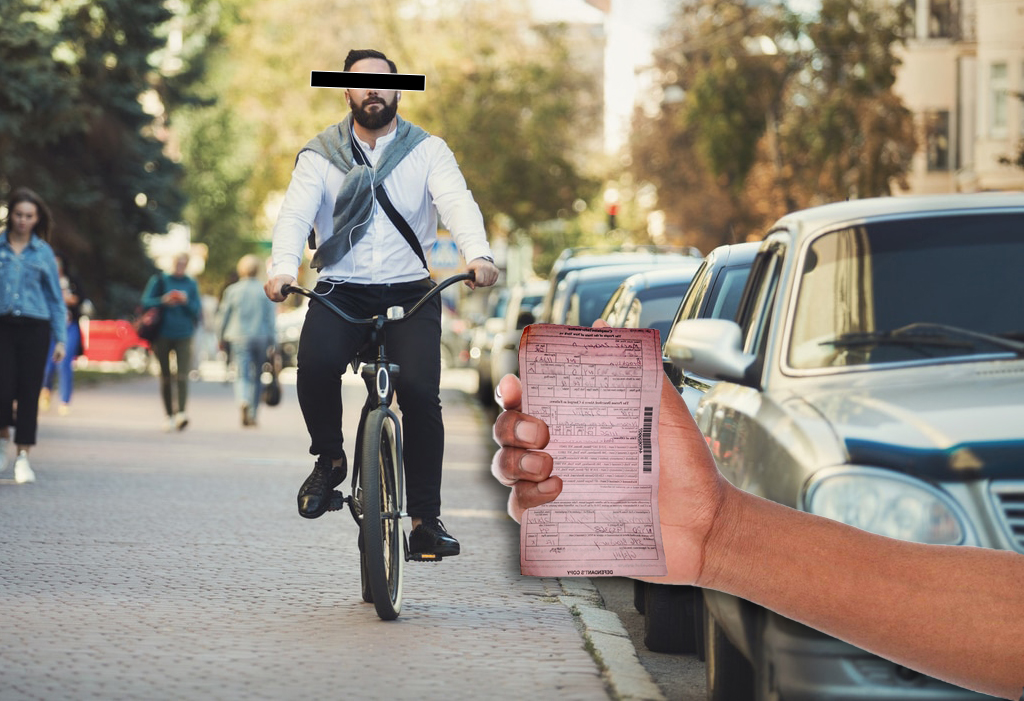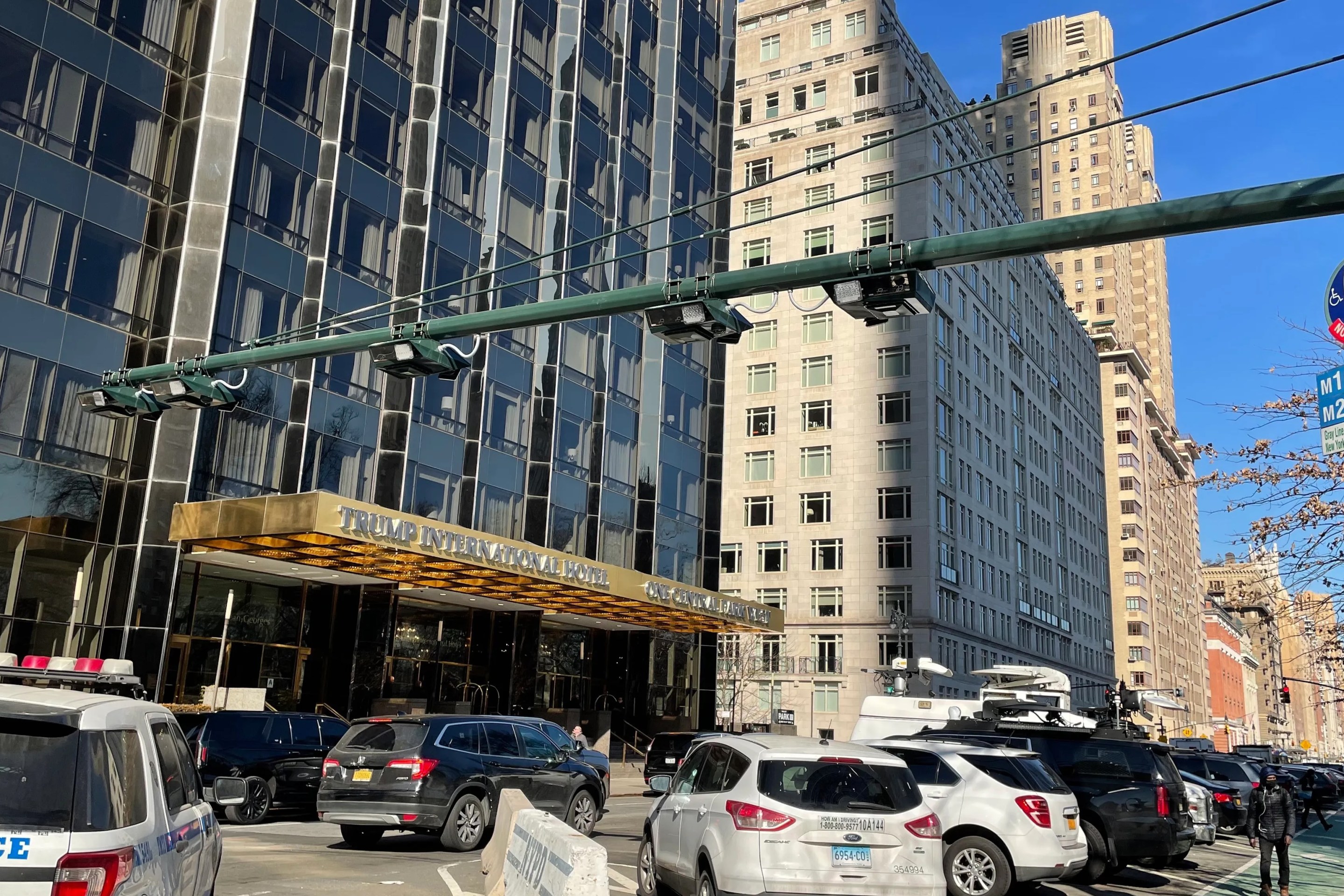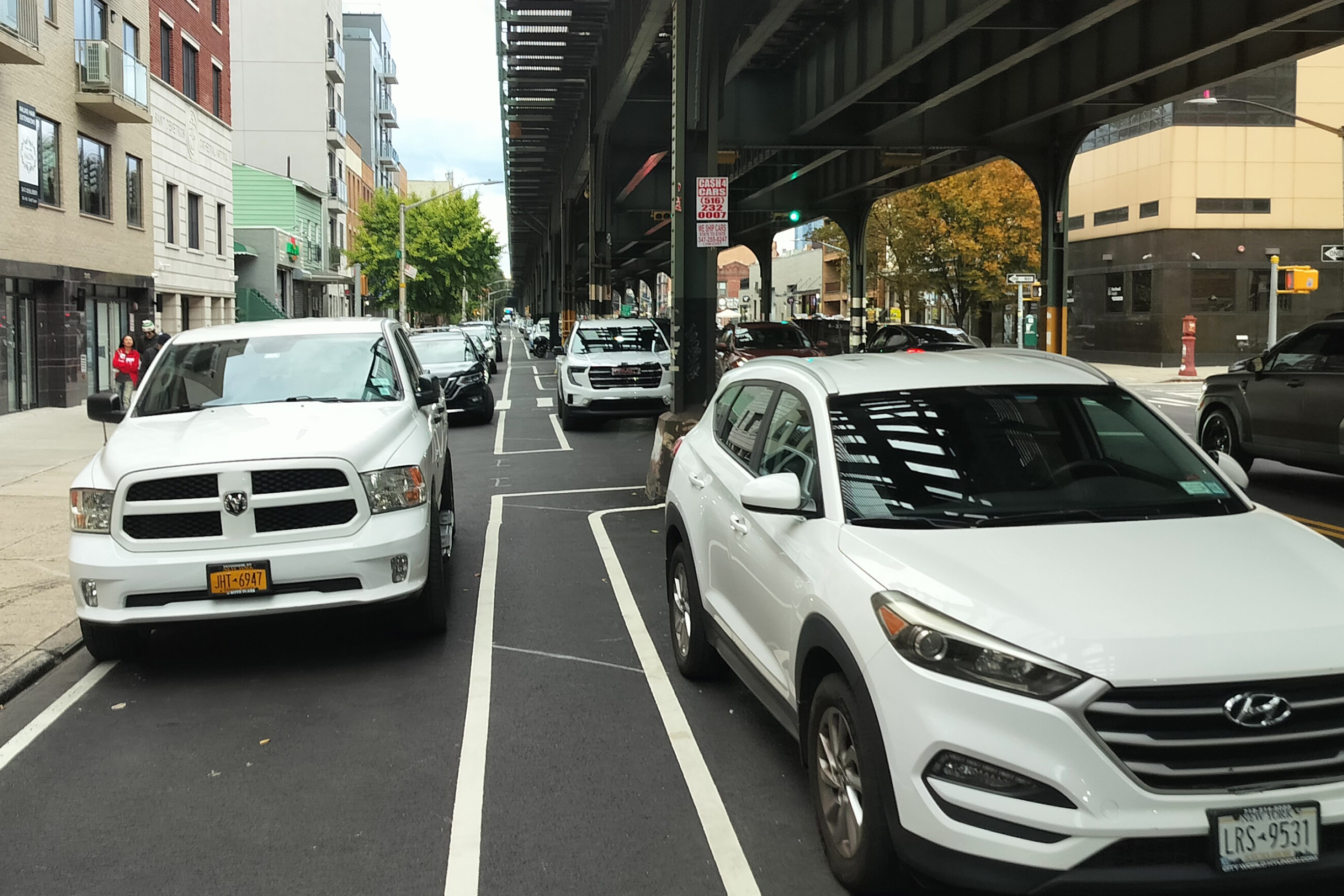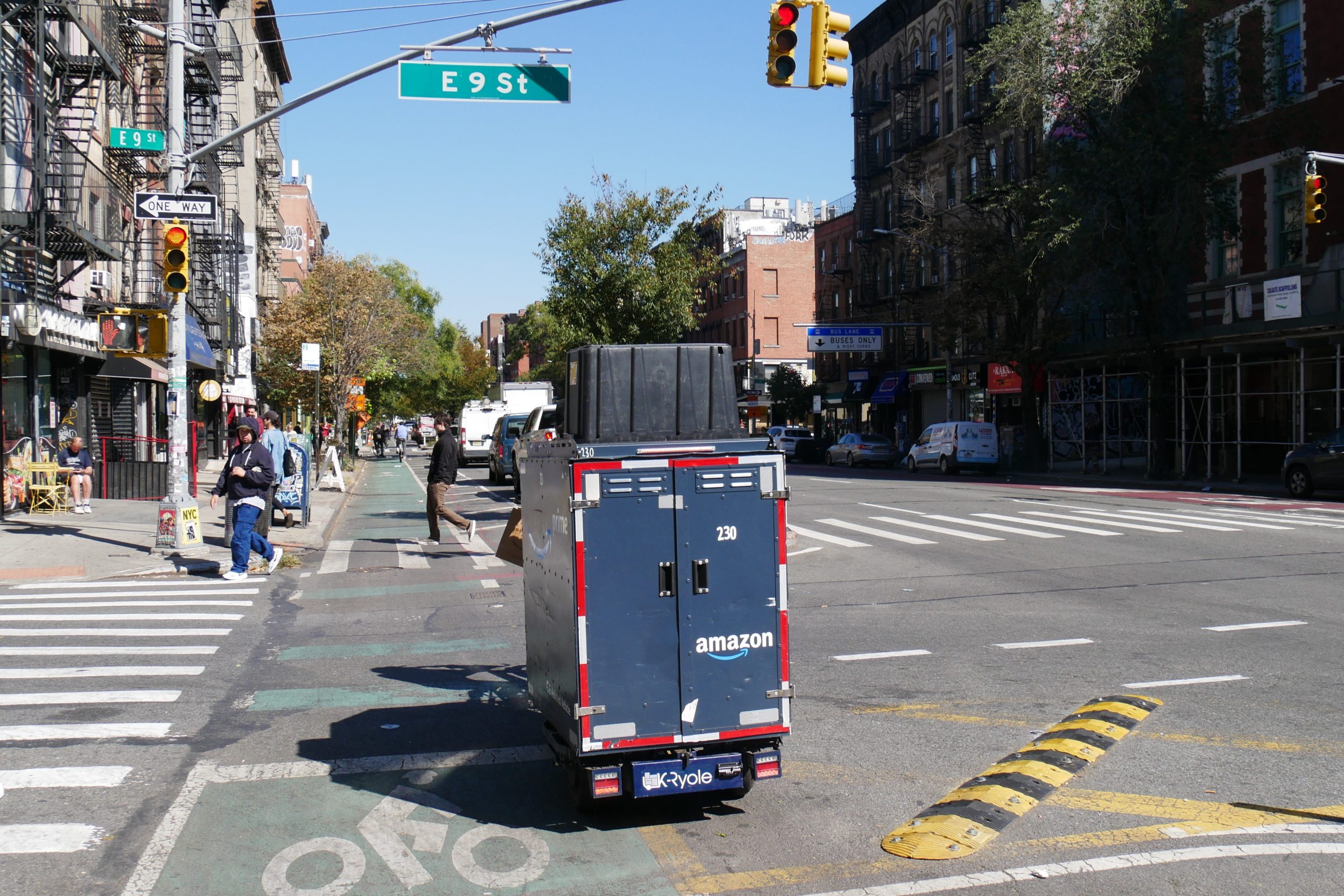State transportation commissioner Joan McDonald deserves an award for chutzpah. In the face of overwhelming opposition from local elected officials to the state's decision to build the new Tappan Zee Bridge without transit, McDonald has, incredibly, taken the stance that the state did no such thing.
Here's McDonald, quoted twice by Transportation Nation's Kate Hinds:
The transit has not gone anywhere. I think it’s very important to clarify that. We’re speeding up construction of the bridge, we’re not slowing down transit. The project that’s on the table now will be built to not preclude transit in the future, when it is financially feasible.
Claiming that the state isn't slowing down transit simply isn't true.
One year ago, under Governor David Paterson, state officials were telling audiences in Westchester and Rockland Counties "New Transit is only way to relieve congestion and improve mobility in the corridor." Working with Metro-North, state agencies were actively pursuing both cross-county bus rapid transit and new commuter rail into Rockland County. Now, under Andrew Cuomo, the state is moving forward with a plan to replace the Tappan Zee Bridge without any transit, though they promise to design the bridge in such a way that transit could be added later.
It's theoretically possible for the state to prioritize the construction of a new bridge for cars and trucks while simultaneously moving forward on transit plans. That isn't what's happening here, however.
As Hinds reported, the MTA wasn't invited to either of Cuomo's two publicly stated meetings on the Tappan Zee Bridge. They aren't even part of the discussion.
Perhaps more importantly, Cuomo definitely "slowed down transit" when he allowed transit to be stripped from the federal environmental review process.
In 2002 and 2008, a team including both the Federal Highway Administration and Federal Transit Administration began the environmental review process for a project covering the full I-287 corridor and including transit. On September 26 of this year, however, the FHWA, the state DOT and state Thruway Authority rescinded that environmental review process. Note the absence of any transit agencies.
"Because of the current economic realities which severely limit financing capability, FHWA, NYSTA, and NYSDOT propose to terminate the Tappan Zee Bridge/I-287 Corridor Tiered EIS and advance a project that will address the needs of the Tappan Zee Hudson River crossing alone," read the notice in the Federal Register. "Transit improvements will not be considered."
No transit can be added to the Tappan Zee Bridge without an ongoing environmental review process. Last year that process existed for transit; now it does not. This is the very definition of "slowing down transit" and at least for now, killing it.
Nor should the capability of adding transit to the Tappan Zee at a later date be considered sufficient.
When the George Washington Bridge was first built, designer Othmar Ammann imagined that the entire lower deck would eventually be used for light rail, as Rutgers professor Michael Aaron Rockland tells it in his 2008 history of the bridge. By 1962, when the lower deck was actually built, six of the eight lower deck lanes were given to automobiles. The other two were left empty, theoretically for future use by transit.
Today, the lanes are still empty, but Vicky Kelly, then the director of tunnels, bridges and terminals for the Port Authority, told Rockland that if they're ever built out they would be for automobiles, not transit. Rockland concluded that "the G.W.B. may be thought of as representative of the triumph of automotive vehicles over mass transit in the twentieth century."
History isn't doomed to repeat itself. Transit could be added to a new Tappan Zee Bridge. Without a proactive effort to build transit, however, it's just as likely that the extra capacity on the bridge will be used by some future administration for more traffic lanes.
If Joan McDonald wants to claim that she didn't kill transit and if Andrew Cuomo wants to claim that he's a smart growth supporter, they need to do more than just talk. Restore the plans for bus rapid transit: At $1 billion, it's actually a bargain. Restart the environmental review process and bring the MTA back to the table, even if it takes a few more years.
If they're not going to work for transit, however, McDonald and Cuomo need to come clean to New York residents and admit that they gave transit the axe.
